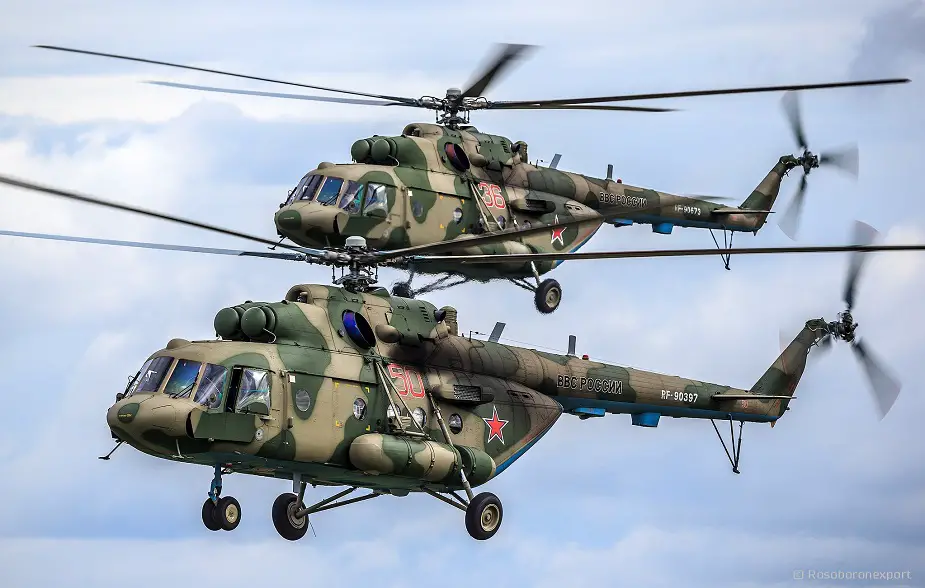Breaking news
Thailand receives three Russian Mi-17V-5 helicopters.
Thailand has received three Russian-made Mil Mi-17V-5 (NATO reporting name: Hip-H) utility rotorcraft, according to the Russian embassy in the Asian country.
Follow Air Recognition on Google News at this link
 Russian Mi-17V-5 helicopters (Picture source: Rosoboronexport)
Russian Mi-17V-5 helicopters (Picture source: Rosoboronexport)
“On March 26, Russia finished delivering to Thailand three Mi-17V-5 multipurpose helicopters, which had been procured under Thailand’s disaster relief program. Ambassador of Russia to Thailand Evgeniy Tomikhin join the official ceremony completing the delivery of three rotorcraft at U-Tapao airbase. Therefore, the Thai inventory of Mi-17V-5 increased to 10 rotorcraft,” said the Russian embassy in a news release.
Since 2011, Thailand has been using its Mi-17V-5 helicopters during various humanitarian missions. “The platforms deliver food to flooded areas, drop tons of water during firefighting, and rescue people in emergency cases. In 2018, Mi-17V-5s join an operation to rescue children from the flooded cave of Chiang Rai,” said the embassy.
Thailand previously received seven Mi-17V-5 rotorcraft, of which the first three were delivered in March 2011, the second three — in November 2015, and the final two — in December 2018. According to Thai reports, the helicopters are intensively operated during various search-and-rescue (SAR), disaster relief, and transportation missions under hot and wet climate conditions of the Asian country. They are also said to have better reliability and fuel consumption rates compared to those of other Thai rotary-wing platforms, for instance, Boeing CH-47 Chinook heavy rotorcraft.
The Mi-17V-5 can be fitted with a wide range of SAR subsystems. According to the portfolio of its manufacturer, the Russian Helicopters holding (a subsidiary of state corporation Rostec), the platform carries night vision goggles, up to 12 stretchers, a searchlight with and infrared filter, a forward-looking infrared (FLIR) device, an emergency landing system, a water bucket, and various 150 kg/280 kg/300 kg winches. The helicopter is also capable of joining combat search-and-rescue (CSAR) missions.
The Mi-17V-5 is powered by two Klimov VK-2500-family engines with a top power output of 2,700 hp each. The powerpack has been designed by UEC-Klimov (a subsidiary of Rostec’s United Engine Corporation). The rotary-wing platform has a maximum take-off weight (MTOW) of up to 13,000 kg and a service ceiling of 6,000 m. It transports up to 36 persons or 12 wounded on stretchers. The platform’s 23 m3 cargo compartment allows transportation of a 4,000 kg cargo; the helicopter also externally carries a 4,000 kg using its sling. The rotorcraft has a basic cruise range of 580 km, which extends to 1,065 km with the use of two additional fuel tanks. The Mi-17V-5 produces a cruise speed of 230 km/h and a top speed of 250 km/h. It should be mentioned that the rotorcraft can be operated as a flying hospital.
The Mi-17V-5 also showed good performance during operations to fight the spread of the novel coronavirus (Covid-19). In particular, the Indian Air Force (IAF) intensively uses the rotorcraft during anti-Covid-19 missions.
© Copyright 2021 TASS. All rights reserved. This material may not be published, broadcast, rewritten or redistributed.



















